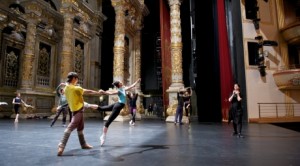 Astana Opera has premiered Aram Hatchaturyan’s Spartacus ballet on June 6, 8 and 10. The audience saw a new version of the ballet by Russian choreographer Juriy Grigorovich and scene designer Simon Virsladze.
Astana Opera has premiered Aram Hatchaturyan’s Spartacus ballet on June 6, 8 and 10. The audience saw a new version of the ballet by Russian choreographer Juriy Grigorovich and scene designer Simon Virsladze.
The ballet’s storyline follows the slave uprising led by Spartacus against the Romans known as the Third Servile War.
Among the most captivating moments of this version of the ballet are its spectacular fence-play and a heart-rending Adagio of Spartacus and Phrygia when the two characters could finally be together.
According to ballet Art Director Tursinbek Nurkaliyev, Spartacus is a masterpiece of art created by Gregorovich. “This is not the first staging by the Russian choreographer for Astana Opera. This ballet is included in the programmes of the Grand Opera House in London, The Bolshoi Theatre in Moscow, The Grand National Theatre in Beijing and The Korea National Ballet. That allows our crew to give performances in these theatres bringing only our own costumes. We are gradually entering the theatre elite,” explained Nurkaliyev.
A lot of soft decoration pieces were produced for the performance. The wooden stage sets were manifactured in Dagestan, Russia. The staging of this ballet also demands a lot of complicated lighting facilities.
Also among the most impressive elements of this ballet is its glorious music with rebellious passages, romantic inflections and impressive musical dramaturgy.
Assistant Choreographers Ruslan Poronin and Oxana Zvetnizkaya said that it was difficult to prepare the ballet within the two-month sheduled for Astana Opera, as ballet dancers need years to comprehend the Grigorovich vision of the Spartacus ballet.
“The more we rehearse, the more we understand that there are no finenesses in the performance. All solo artists work with great passion and concern. To the present day, Spartacus remains one of the most theoric ballets and a smash-hit of our time,” noted Poronin and Zvetnizkaya.
Spartacus was first staged by Grigorovich at the Bolshoi Theatre in 1968 and was later acclaimed in many countries. More than 80 artists are expected to participate in the performance in Astana.


